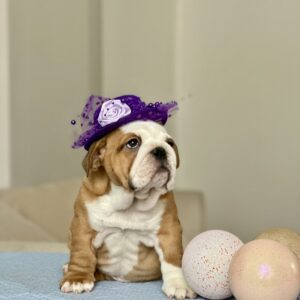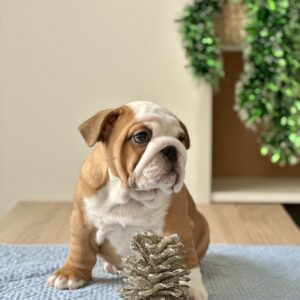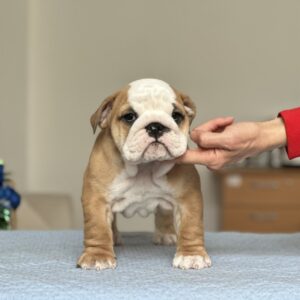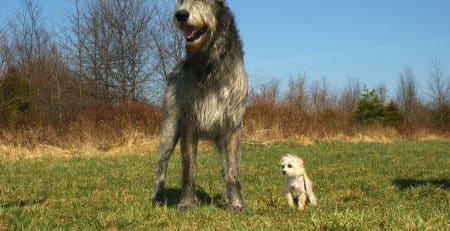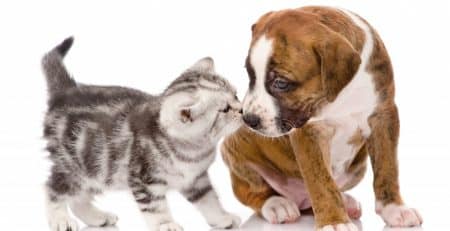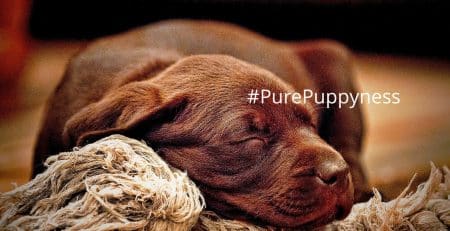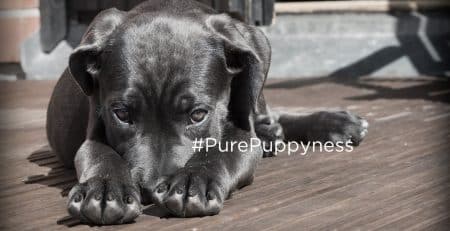The History of English Bulldog
Most you shcould know about the history of English Bulldog. The English Bulldog is breed beloved by many, and is generally kept as a pampered pet these days. However the Bulldog’s ancestry may surprise you, as this sweet and loveable dog has a surprisingly bloody past.
Suleiman – male English Bulldog
The precursors of our modern English bulldog had little in common with today’s bulldog. They had more in common with Mastiffs and Pitbull terriers in shape. Bulldogs were originally developed in the 1600s for bull baiting: a blood sport in which a bull was tied to a metal pole or placed in a small pit, and dogs were set on the bull. The aim was for the dogs to attack the bull, often clinging to the animal’s muzzle, and immobilise it. At the time it was believed that meat from a baited bull was tenderer, and crowds of spectators gathered to watch this “sport” (which is fortunately now illegal). The bulldog was developed from mastiffs, and was an agile, tenacious and ferocious creature, ideal for bull baiting.
English Bulldog puppies
Bullbaiting was banned in Britain in 1835, so the bulldog seemed to have outlived its purpose, and the number of purebred dogs began to decline. Fortunately, the English bulldog had many admirers that kept the breed alive. The first Bulldog club was founded in 1864 by R.S. Rockstro. This group only lasted for three years, but during this time the members created the first breed standard for the bulldog.
In 1875 the Bulldog Club was founded in London, and was incorporated in 1894. The club sought to moderate the size of the English bulldog, as the influence of imported Spanish bulldogs was leading to a great increase in size. The club also held exhibitions and breed competitions both in London and in other cities. Meanwhile, across the Atlantic, H.D. Kendall of Massachusetts founded the Bulldog Club of America, and in 1908 the South African Bulldog Club was formed.
The changes
Since the English bulldog was no longer wanted for fighting, the breed’s appearance and character changed considerably over the years. Breeders encourage a more gentle and amiable temperament, though even today bulldogs are famously tenacious and even stubborn dogs, but with a strong protective instinct, especially towards family members. The bulldog’s physical appearance has also changed greatly. Thanks to influence from the Pug, the English bulldog now has a more rounded head and shorter muzzle, a curly tail, and a shorter and wider body, leading to a less athletic but still tough looking dog.
The modern bulldog is a quiet but friendly animal, stubborn yet sweet-tempered and, with patience (and a few treats), can be easily trained. They may look tough, but English bulldogs tend to be real softies, even clownish. They are medium sized with short fur, and are generally easy to care for.
The best way
The short muzzle means that the English bulldog snorts and snores, and may have breathing difficulties. Their build can also lead to joint problems and difficulty giving birth. However, a responsible breeder should be able to help you find a healthy puppy that will make an ideal family pet, and your veterinarian should be able to advise you on the best way to care for your English bulldog.
You can read more about this breed on our English Bulldog breed information page. You can also ask for an offer or browse our English Bulldog puppies for sale.




